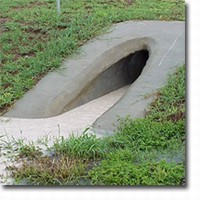The Town of Fairview is dedicated to environmental principals and guidelines that enhance our town for our citizens today and in the future.
The Town of Fairview is dedicated to environmental principals and guidelines that enhance our town for our citizens today and in the future.

Our Environmental Mission: To advance and support sustainable development and public health through comprehensive environmental protection, conservation, and effective resource management; implement federal, state, and local environmental statutes and regulations; integrate the Town’s built and natural environments through responsible development practices, appropriate environmental stewardship, and sound environmental science; foster and ensure a continuous public involvement and appreciation for the Town’s unique and invaluable natural surroundings.
Additional Resources:
 Heard Natural Science Museum & Wildlife Sanctuary
Heard Natural Science Museum & Wildlife Sanctuary
 Texas Commission on Environmental Quality
Texas Commission on Environmental Quality
 Texas Parks & Wildlife Department
Texas Parks & Wildlife Department

Storm Water Management: Storm water runoff is collected in the Town’s storm water drainage system and is released – untreated – into the local waterways. Pollutants that are discharged onto the ground are transported into the storm water system by rain and surface runoff. These contaminants eventually end up in our local waterways and degrade our drinking water supply. Read more.

Water Quality: The North Texas Municipal Water District, from whom the Town of Fairview purchases all of its treated water, publishes a report each year in compliance with state law that describes water quality. The Town of Fairview also publishes an annual report in compliance with state law that describes the quality of water it provides to consumers.
.... Read more.

Water Conservation is not only the right thing to do, but as the town and county continue to grow, it will become more and more important to ensure there is enough water to go around. To do your part, try these suggestions from the North Texas Municipal Water District, suppliers of treated water to Fairview utility customers ... Read more.


372 Town Place Fairview, TX 75069 |  972-562-0522 | Map It
972-562-0522 | Map It
General Email Inquiries: info@fairviewtexas.org
This is the Official Website of the Town of Fairview.


In 1999, the Town Council adopted a series of restrictions and guidelines designed to limit glare, reduce unnecessary light, and control other light pollution. Unlike traditional lighting that allows spillover light onto adjacent properties and wastes huge amounts of light that is directed skyward, Fairview has been very careful to ensure adequate lighting only where it is needed. You can see the difference as you approach Fairview from a distance at night.
Instead of a glowing sky that blocks the stars like in other cities, you'll see dark skies, stars, and plenty of nature.
Purpose and Intent of Outdoor Lighting Regulations: To regulate the installation and use of outdoor night lighting fixtures in the town and improve nighttime public safety, utility and security by restricting the nighttime emission of light rays which are sources of light trespass and unnecessary glare and are detrimental to the safety and security of persons, property, and vehicular traffic. Unwanted nighttime light detracts from the traditional aesthetic values of the town; the town wishes to limit light pollution and preserve the naturally dark skies.
Applicability of Outdoor Lighting Regulations:
Creation of Lighting Districts: The zoning districts established in these regulations are consolidated into lighting districts to allow for uniform lighting from one district to the other. The lighting districts are as follows:
(1) District 1. Includes the CPDD. The boundaries of the CPDD are established in Ordinance 2014-9-11B, as amended or may be amended in the future. Said ordinance is available electronically on the town planning department's webpage and a copy is kept as an official town record in the custody of the town secretary's office.
(2) District 2. Includes all areas outside of the CPDD.
Important Documents:
Article 3.14 Outdoor Lighting
CPDD Lighting Requirements (as of Amendment: Ord. No. 2017-28, adopted 12/5/2017) Contact Planning Dept. to confirm current CPDD regulations
Lighting Districts Map
Examples of Acceptable and Discouraged Light Fixtures
Dark Sky Ordinance Summary with Lighting District Map and Lighting Examples
Dark Skies Lighting Tips